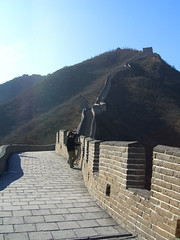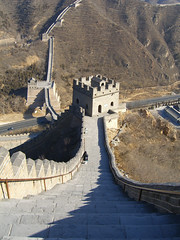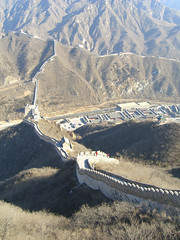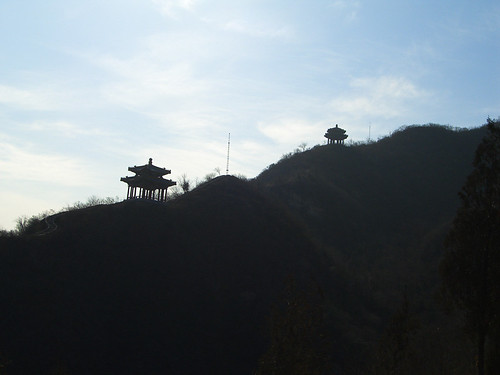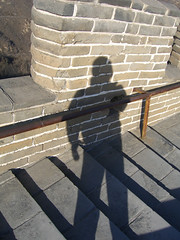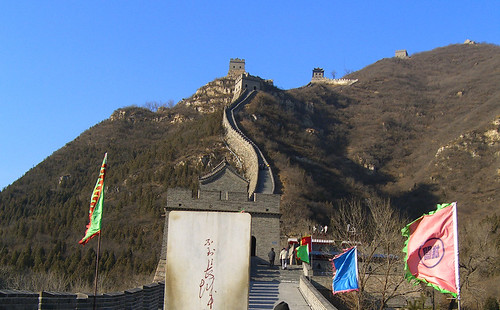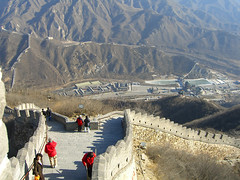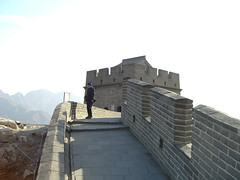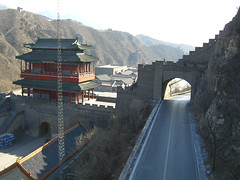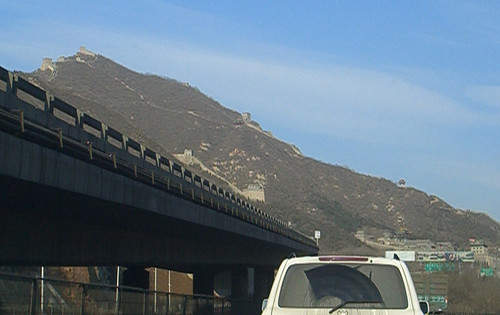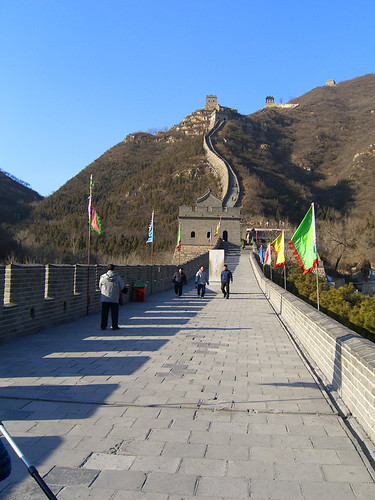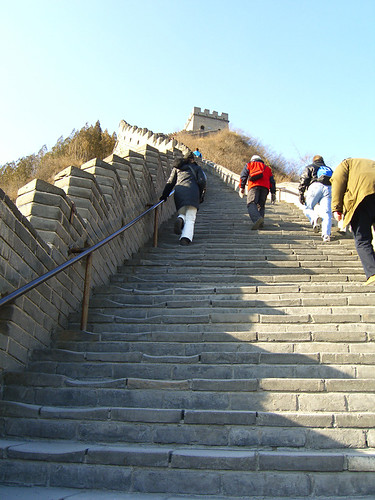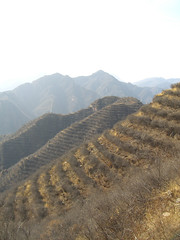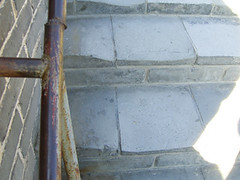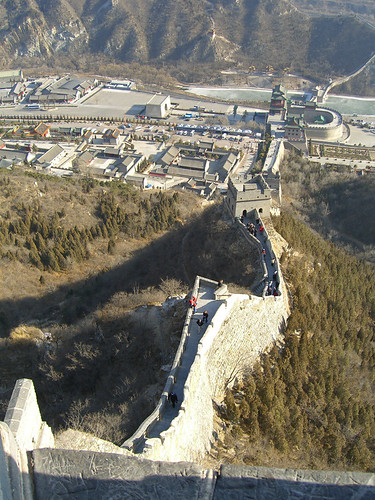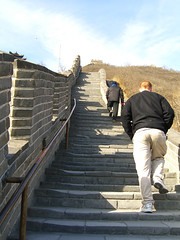As far as scenic views go, there isn't much to see at the top of the Juyong Guan wall. There wasn't meant to be. The wall was built for defense.
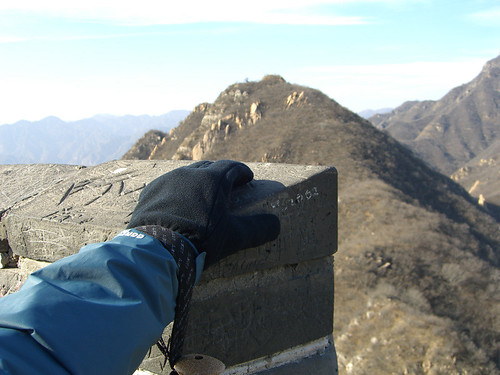
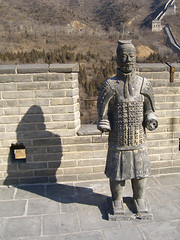 Prior to visiting the Great Wall, I used to have this mental picture of Emperor Qin Shi Huang standing on top of a hill, looking down on the wall being built by slaves, who are falling to their deaths by the thousands.
Prior to visiting the Great Wall, I used to have this mental picture of Emperor Qin Shi Huang standing on top of a hill, looking down on the wall being built by slaves, who are falling to their deaths by the thousands.Blame it on some ill-conceived illustration in a school text book in Primary School!
I now know (from the tour guide and the books I consulted after the trip) that:
(1) The wall was not always a continuous structure;
(2) Its construction started before Qin Shi Huang came into the picture;
(3) No sane ruler, especially one who could unite China, would depend entirely on slave labour to build something as important as a wall for defense.
OK, I'm not too sure about the last part. It might have been conscripted labour, or a mix of conscripted labour, soldiers, paid craftsmen. I'm sure there's some scholarly article about its construction in some library somewhere.
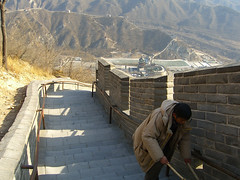
In reality, the "Wall" was built in parts by earlier dynasties, throughout their rule. It dates back to the Warring States Period (453 - 221 B.C.), built as defensive measures against rival kingdoms. It was Qin Shi Huang who had all sections connected after he unified China (see this page for reference as well).
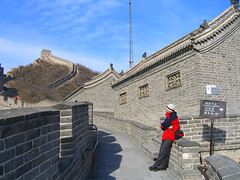
There are different sections of the wall that is open to public. The one my wife and I visited was at "Juyong Guan". Other sections (at some distances away) are at locations like Ba Da Ling, Jin Shan Ling, Mutianyu, and Simatai -- all which I've not visited, in case you're wondering.
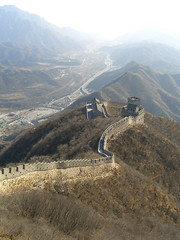
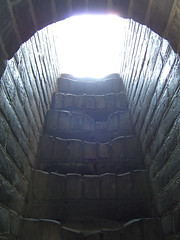
The Juyong Guan wall is also famous for a building called "Yun Tai" or "Cloud Platform", a base for a temple (see this reference). Unfortunately it was closed for restorations and I wasn't able to get a decent picture from the outside.
The Yun Tai's significance, as pointed out by our tour guide, was that it housed the (lost) script of the Xi Xia language.
Xi Xia was a relatively small state that was eventually conquered and whose written records were deliberately destroyed by Genghis Khan's armies during the 14th century. In essence, the Xi Xia race ceased to exist. Literally wiped off the face of this earth.
Genghis Khan's armies wasn't the first to deliberately destroy a people's recorded existence -- and they certainly weren't the last.
Aside: Imagine all of the human race's records and heritage stored on digital devices. Then we either run out of power, or the technological know-how to retrieve that information. Eventually the physical equipment deteriorates and all stored information is lost.
Hmm... Perhaps that might indirectly account for some of the words, symbols and names carved onto the Wall -- the equivalent of "Killroy was here". I noticed quite a bit of that. Some are obviously quite recent. Maybe deep within our subconscious, we humans are wet-wired to leave some physical mark just to prove that we exist.
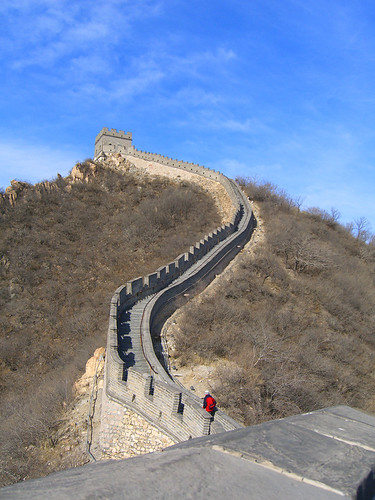
Uh, no -- I didn't leave any mark on the wall.
[This is the last scheduled post regarding my Beijing vacation. I've more pictures and stories but I won't be blogging about them. My wife and I plan to visit Beijing again, and most certainly China. Wonder how much China will change by then.]
